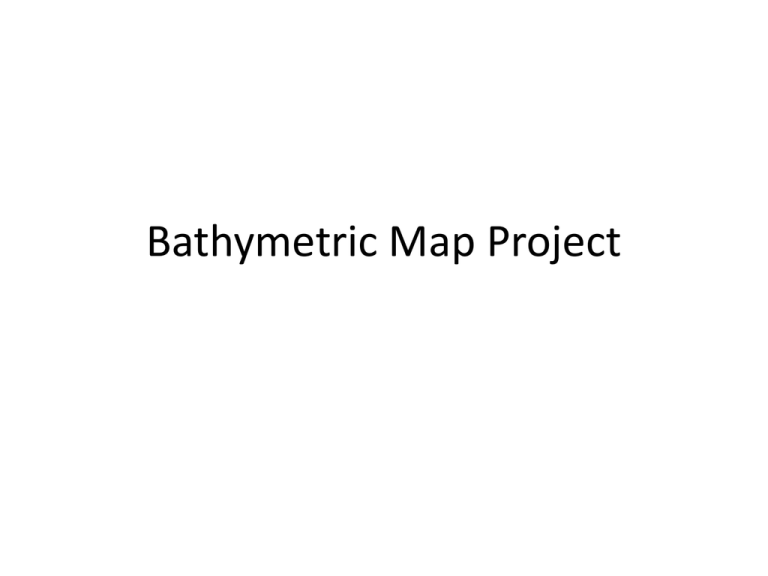
Bathymetric Map Project
Begin to find plate boundaries
• Ocean ridges, rises, and deep ocean trenches
are all geologic features that are formed at
plate boundaries
• Let’s use these features to draw some of our
plate boundaries
• Use a colored pencil to trace over the ridges
and rises (white areas).
Continue finding plate boundaries
• Use a colored pencil to trace over the trenches
(blue areas).
• Use a colored pencil to trace over the
Mountains (white on land).
Using earthquake and volcanic
activity to find plate boundaries
• Earthquakes and volcanoes are common along
tectonic plate boundaries
• Plot the 10 circled earthquakes with this colored
symbol
(blue oval) using latitude and
longitude
• Plot the 8 circled volcanoes with this colored
symbol
(purple triangle) using latitude
and longitude
• Complete boundaries by connecting the
earthquakes and volcanoes using an Orange
pencil
Label 7 major tectonic plates:
Eurasian, Indo-Australian, Pacific,
American, African, Antarctic, Nazca
What is the direction of motion for the
major plates?
Held
stationary
Color the plates
• Lightly color each plate a different color.
Remember that the left and right edges of the
map are connected; color any split plates with
the same color! Hold the map edges together,
forming a cylinder, so that you can see this
relationship.
• Make sure you have an arrow on each plate
(except the African plate) to show direction of
motion
Label Plate Boundaries
• Based on the movement of the plates and
what occurs at the boundaries, label each
major boundary.
• Divergent
• Convergent
• Transform
Copyright © Houghton Mifflin
Company. All rights reserved.
Essentials of Geology, 1b–9
Cut the plates
• Before cutting out the plates, make a small cut
between the map and its border. Cut the
border from the map in one piece.
• Now, cut the plates along boundary lines.
• Reassemble the map on top of your backing
sheet
Move the Plates
• You have a present-day representation of the
major lithospheric plates
• Assume that in 50 million years the plates will
move about 3% from current positions,
continuing in current direction
• Hold African plate stationary. Move other
plates 1.5 cm in direction indicated by arrow.
Move the Plates
• At boundaries with trenches, slide
subducting plate under other plate
– When oceanic crust and continental crust
converge, the oceanic crust subducts
• Where continents come together,
remember that continents cannot subduct,
so mountain-building takes place. Use a
black pen or crayon to draw in mountains
(or more mountains)
• Glue plates in place on backing sheet









